
Gallop to the New National Heritage Centre
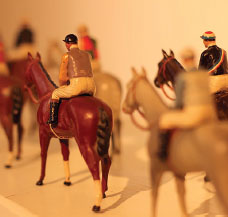
SHIRA LEVINE
Completed in late 2016, the English home to the sport of kings in Newmarket, Suffolk, has a new home. After years of planning and preparation, The National Heritage Centre for Horseracing and Sporting Art has opened its doors and paddocks in Palace House, the vestige of King Charles II’s racing palace. National Horseracing Museum and British Sporting Art Trust are complemented with live thoroughbreds in the Rothschild Yard, tack room, shop and bakery. Here is a complete introduction to British fascination with horseracing; about 90 minutes’ drive from London. nhrm.co.uk
Lapwing Get a Life Raft
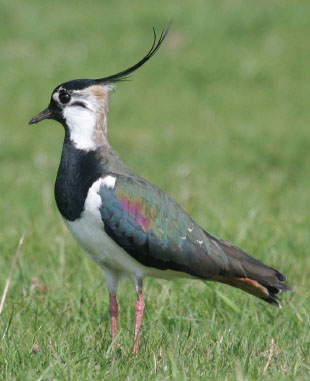
THE WILDLIFE TRUST OF SOUTH AND WEST WALES
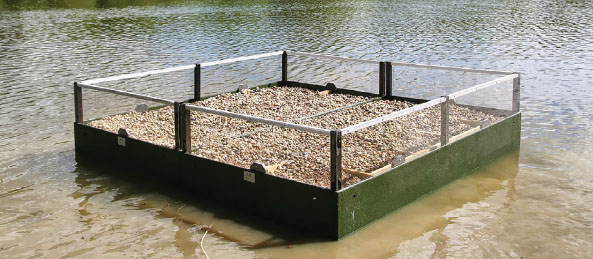
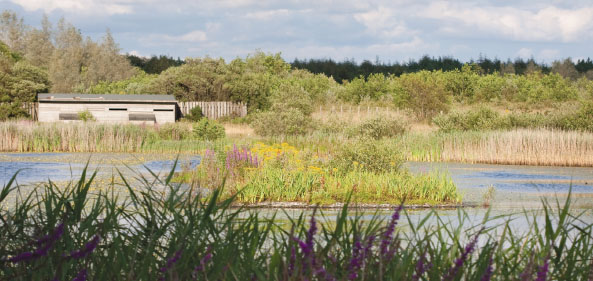
Sián Ellis Celebrates the Cotswolds
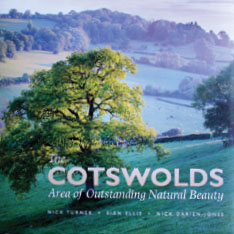
LONGTIME REGULAR BHT writer and contributing editor Sián Ellis has written stories on the Cotswolds for British Heritage Travel for years. Her expertise on the region (not far from her farmhouse on the Welsh Borders) has not gone unnoticed. Now, Sián has written the text for a new book celebrating the 50th anniversary of the Cotswolds as Britain’s largest designated Area of Outstanding Natural Beauty.
The result is a systematic panorama of Cotswolds landscapes, prehistory and history stretching from Bath in the south to the hills surrounding Chipping Camden to the north. There’s no doubt that, as Sián begins her introduction, “If you imagine a picture of rural England at its most idyllic, likely as not a vision of the Cotswolds springs to mind.”
At the same time, rolling limestone hills and verdant hidden valleys are only part of the story. The footprint of human life upon the Cotswolds landscape dates back 5,000 years. Prehistoric barrows, Roman remains, abbey ruins and golden-stone cottages blend into the landscape and contribute seamlessly to its “natural beauty.”
Superbly photographed by Nick Turner, the book ranges from the geology of the Cotswold escarpment and the habitats it produces to the historic highlights of the buildings embedded into the hills and valleys and the cultural heritage they represent.
Congratulations to Sián and the entire team that produced this commemorative tribute. The Cotswolds: Area of Outstanding Natural Beauty by Sián Ellis, Darien-Jones Publishing, L14.99, is available at cotswoldsaonb.org.uk and darien-jones.co.uk.
World’s Festival City for 70 Years

PHILIP MERRY
LAUNCHED IN 1947 to celebrate arts and culture and bring the world together following World War II, Edinburgh Festivals have sustained that inspiration for 70 years. Led by August’s Edinburgh International Festival and flanked by the Art Festival and the International Book Festival, there is something going on in Scotland’s capital city throughout the year, with 12 major festivals planning to mark this 70th anniversary and a year-round booming arts scene. Plan your festival calendar at edinburghfestivalcity.com.
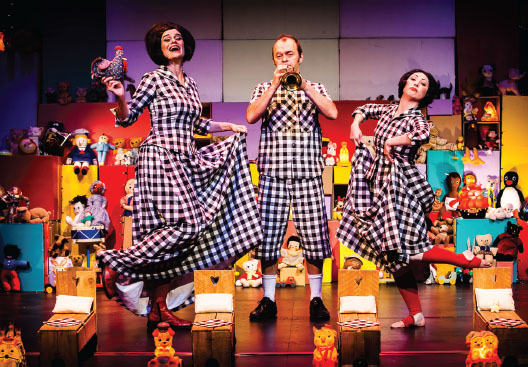
SEAN YOUNG
“Aberdeenshire Business Owner Wins Presidential Election”

JEREMY SUTTON-HIBBERT / ALAMY
Richard III—Resting in Peace
From the time of their amazing discovery in early autumn 2012, the bones of King Richard III have had an eventful journey. British Heritage Travel covered the story throughout. I was fortunate to visit with the archaeological team from Leicester University just a few weeks after they made the remarkable discovery beneath a city car park just 100 yards or so south of Leicester Cathedral. We told the story in “Discovery: King Richard III” (July 2013), including what proved to be the “Eureka” moment in the trenches for osteologist Jo Appleby.
That autumn, I went north to Richard’s Yorkshire home and power base at Middleham as “Lord of the North” under his brother, King Edward IV. “Richard III at Home in Yorkshire” (November 2013) provided the backstory of this infamous Yorkist king, whose earthly remains had been lost for 527 years.
Meanwhile, what was pretty convincing physical and “circumstantial” evidence was confirmed: DNA testing on a Canadian man of confirmed descent (17 generations) from Richard III’s sister Anne proved definitively that the bones found in the shallow grave beneath the heart of the bustling city of Leicester were indeed the defeated, humiliated and, eh, misplaced monarch.
While the research team from Leicester University gleaned everything of historical significance that could be gained from the skeletal remains, public debate raged fiercely for months over the final disposition and reinterment of the Royal remains. Advocates championed Westminster Abbey and York Minster, instead of in Leicester, where he had lain since the Battle of Bosworth Field in 1485. Leicester won out; it was the right decision for history, and it was great news for Leicester.
We reported on the week’s commemoration of ceremonies and services in March 2015 culminating in Richard III’s remains being placed in a final Royal resting place in Leicester Cathedral in “The Burial of Richard III” (May 2015). And there, the story endeth.
I returned to Leicester to visit Richard’s tomb now that the dust has settled for eternity. The king’s mortal bones do rest in dignity and honor in a cathedral chapel beneath a simple marble tomb engraved with his motto, Loyalte Me Lie. Nearby on display is the embroidered pall beneath which the coffin processed, with a replica of Richard III’s crown.
The cathedral welcomes its visitors, who are greeted warmly and directed to the Royal grave—and counted. Across the landscaped cathedral courtyard, the Richard III Centre welcomes them as well. Here the story of the controversial Richard’s life and death, loss and remarkable rediscovery are imaginatively recounted, complete with a holograph of the bones imposed over the actual trench where the body was found and identified.
King Richard III is big business in Leicester. He has put this colorful Midland city on the proverbial map, and Leicester has made the best of it. If you are in the neighbourhood or passing by on the M1, do stop in and pay your respects.
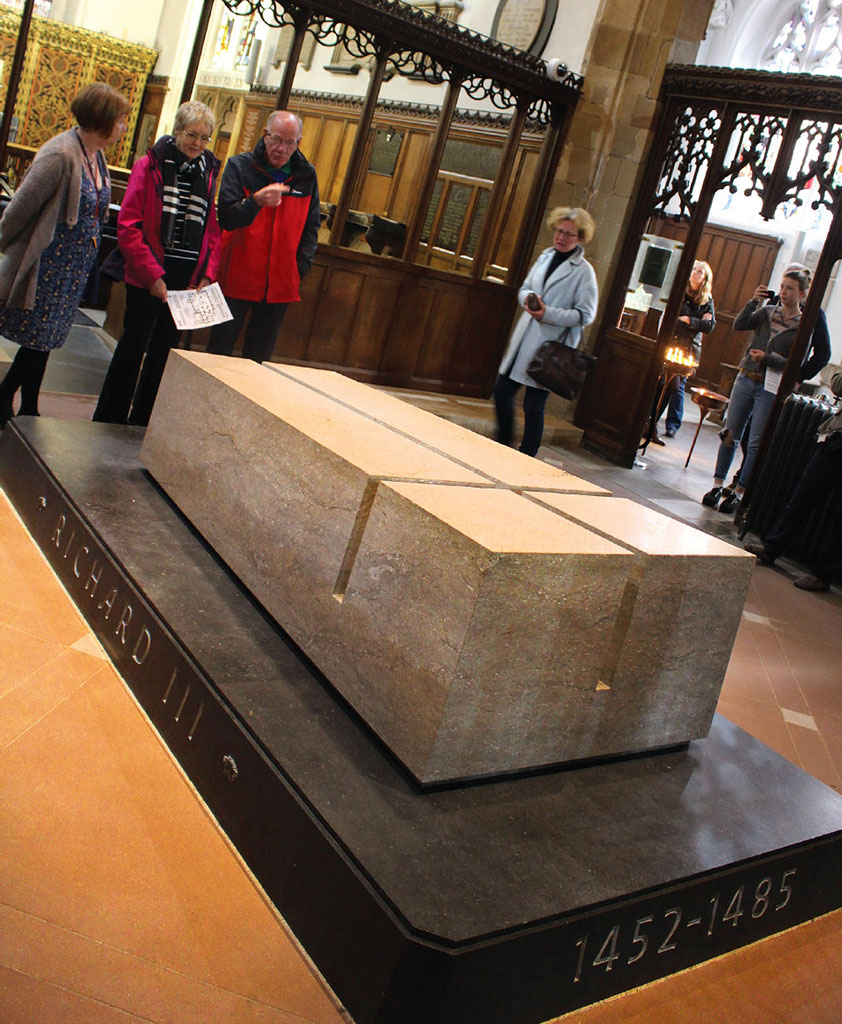
The tomb of King Richard III lies in a simple chapel to the side of the choir in Leicester Cathedral.





Comments